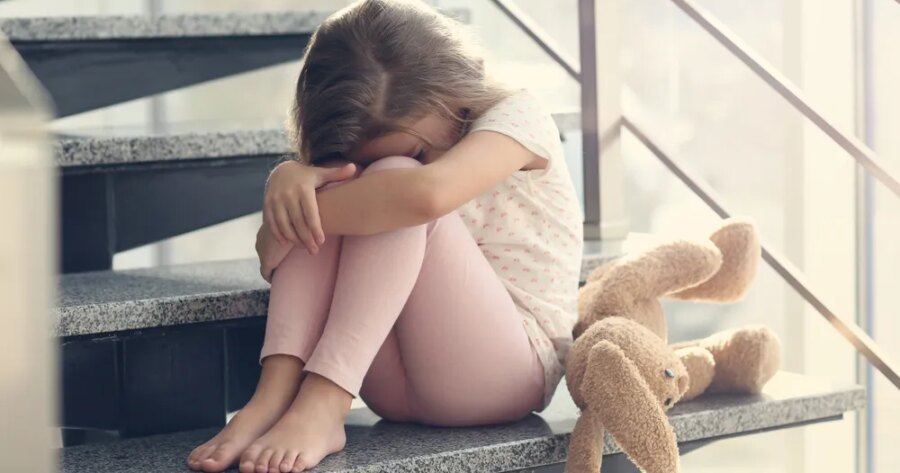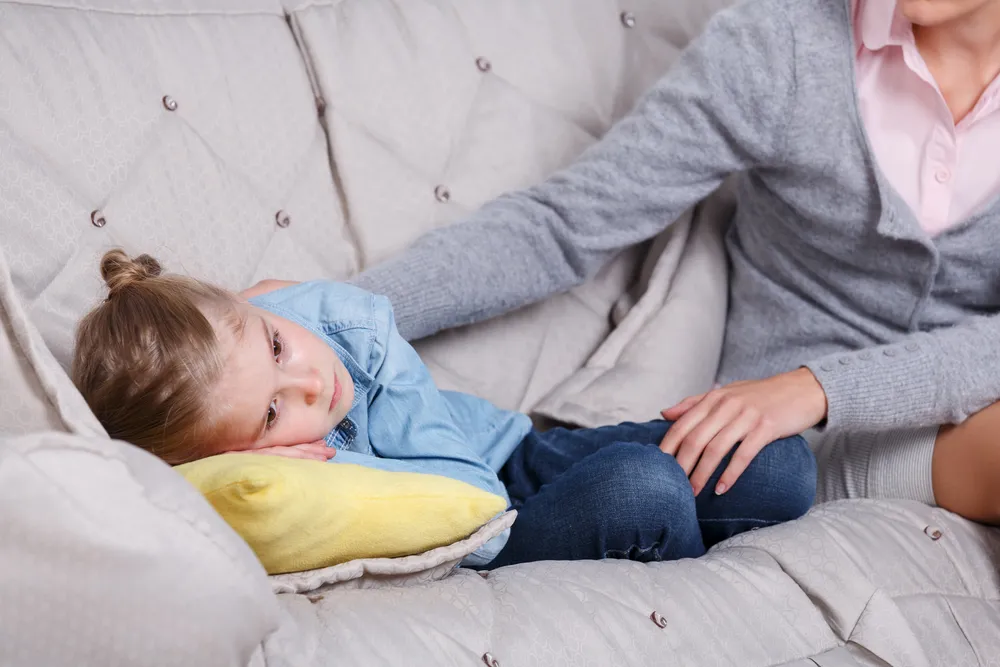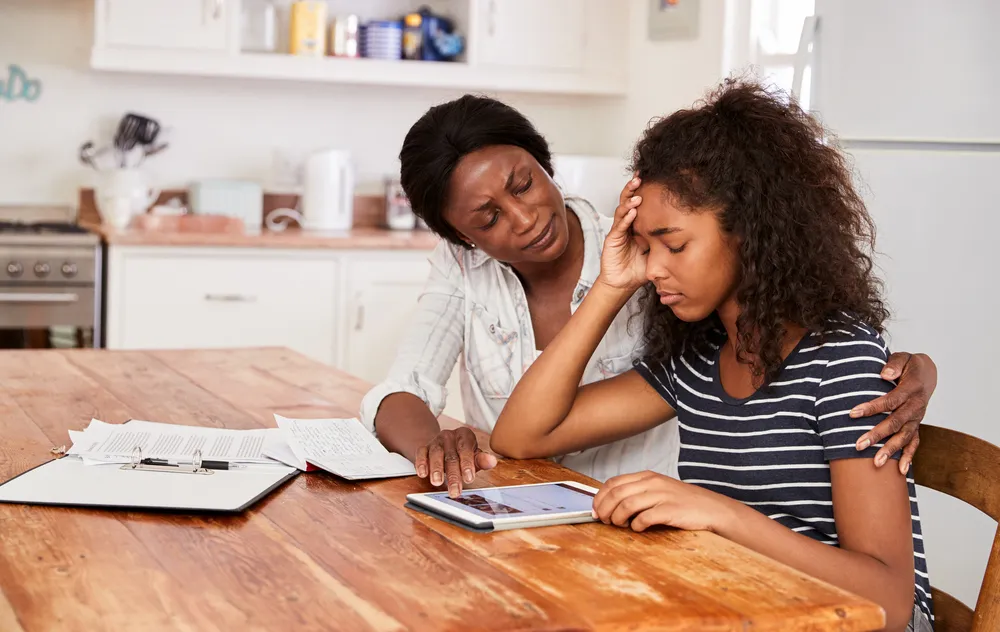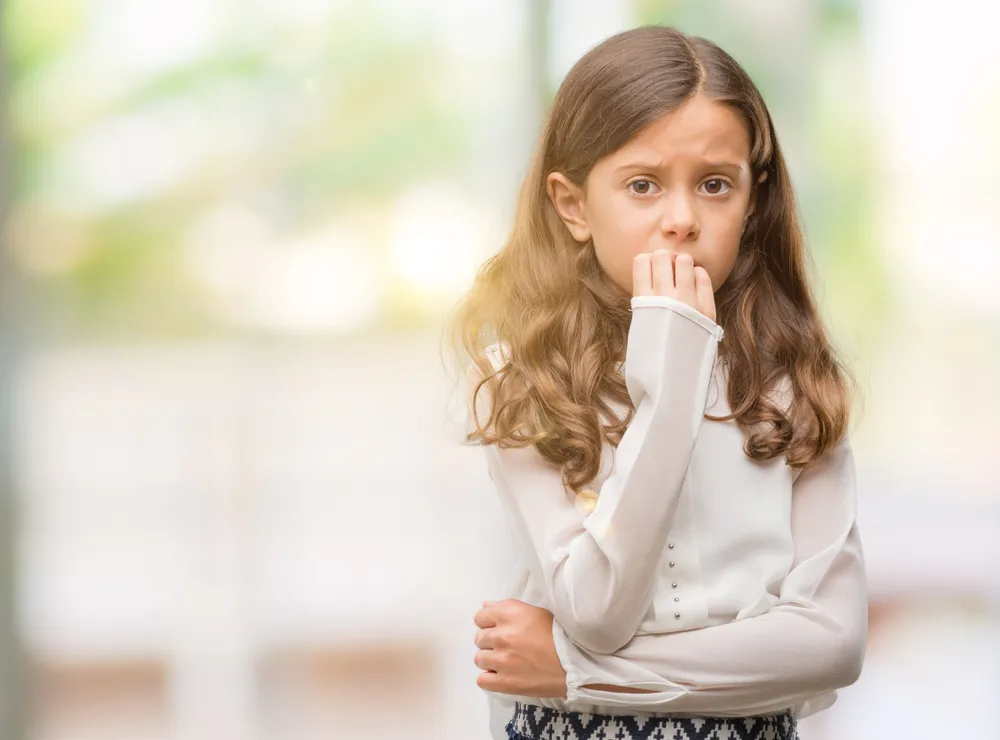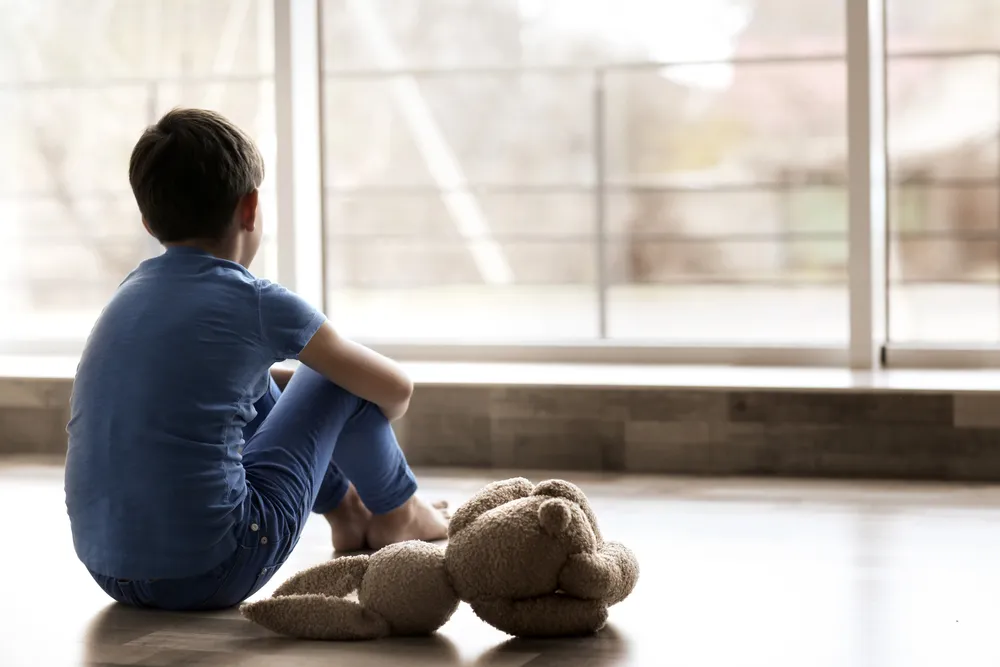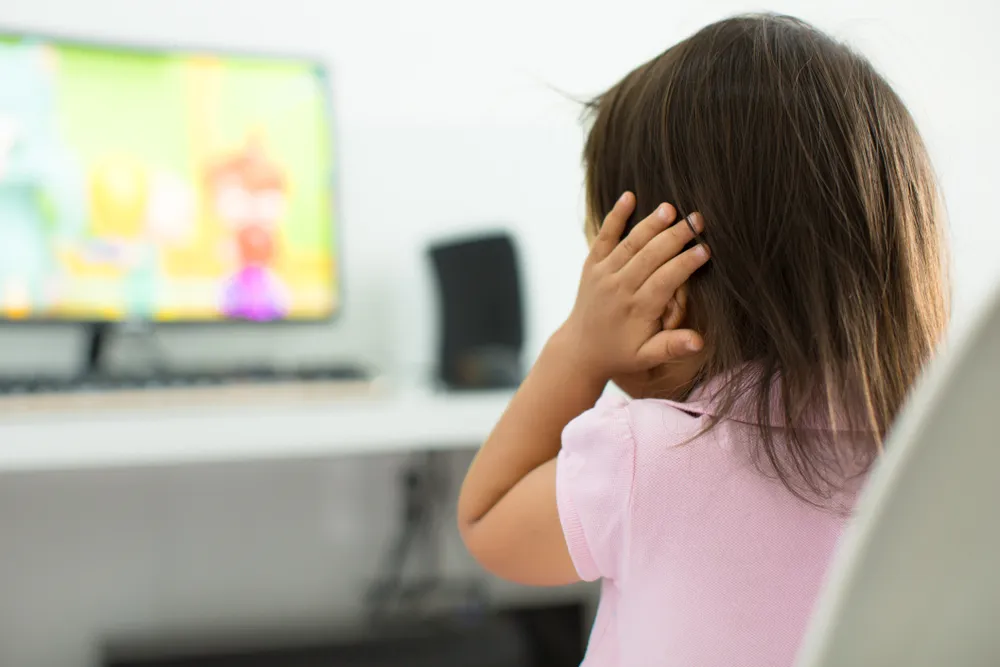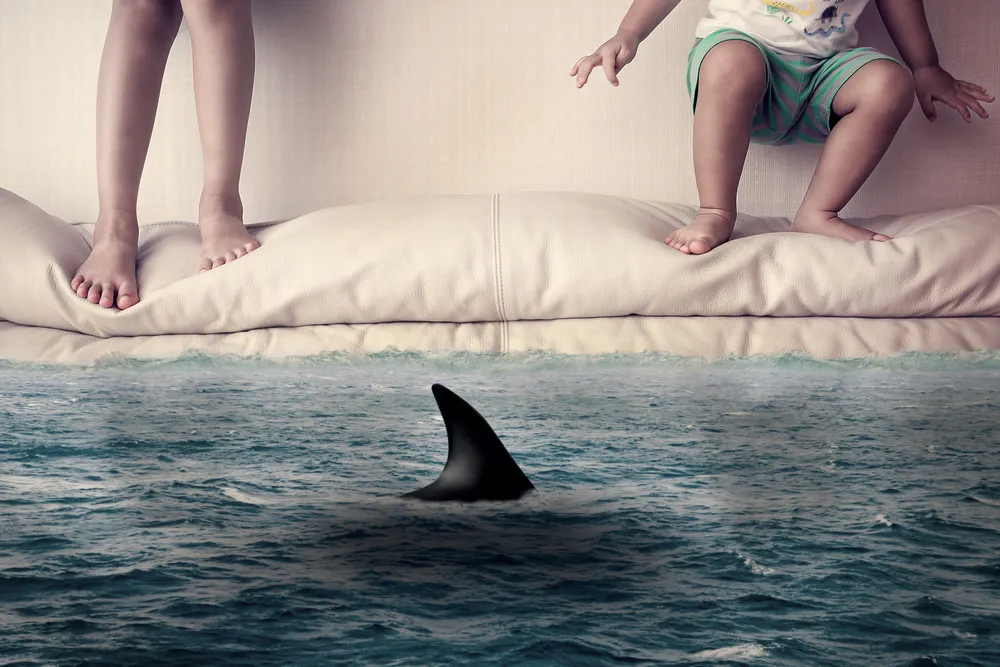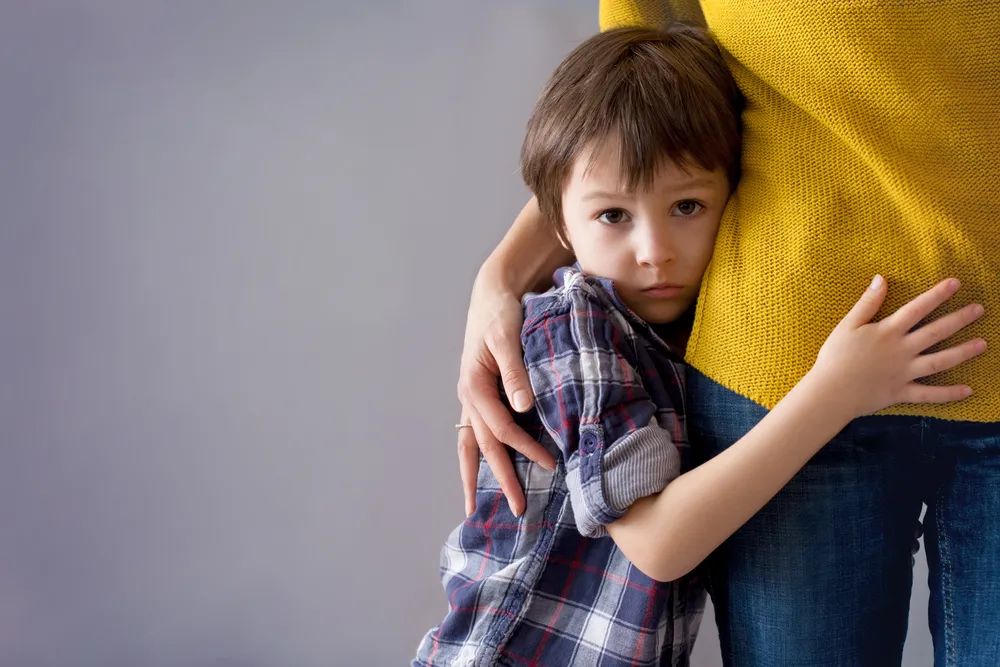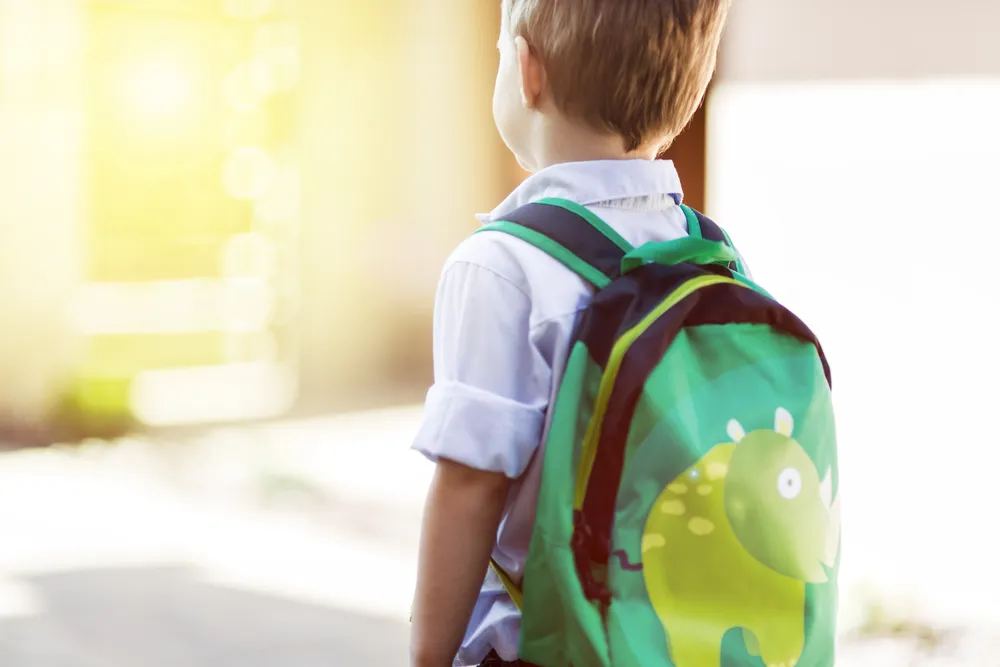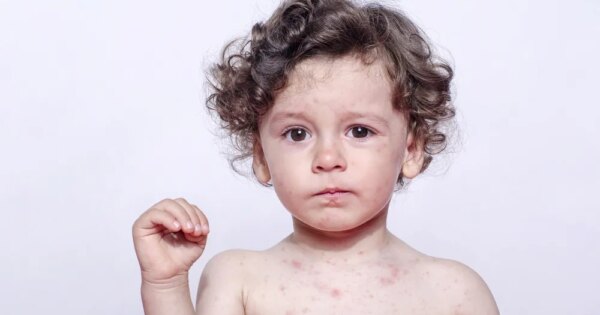Anxiety is one of the most common mental health concerns in both adults and children. Anxiety Canada notes that anxiety affects up to 20-percent of children and adults over their entire lifespan.
While it’s normal for a child to experience anxiety at certain points in life, especially as they are learning to do things on their own. An anxiety disorder will cause extreme fear, worry, and even affect a child’s behavior, including issues with sleeping and eating, as well as mood changes.
If you suspect your child is struggling with an anxiety disorder, it’s important they get the help they need. The first step is recognizing the problem which is why we’ve compiled a list of the most common signs and symptoms, as well as what causes an anxiety disorder, the different types, and how they can be treated. Let’s take a look…
Signs and Symptoms
1. Physical Symptoms
Even though anxiety is often associated as a mental and behavioral condition, it can cause physical symptoms. Kids and teenagers with anxiety may complain about stomach aches, muscle tension, nausea, difficulty breathing, racing heartbeat, shakiness, dizziness, frequent urination, and excessive sweating, says Kids Health. If the symptoms are bad enough, you might even notice them without your child saying anything.
2. Behavioral Symptoms
The most common behavioral symptoms associated with anxiety in children are increased irritability, difficulties sleeping (both falling asleep and staying asleep), difficulties separating from either parent, as well as refusing to go to school or do other activities. They might also have trouble meeting new people and/or speaking to people outside the family.
A child struggling with social anxiety may be constantly worried about what others think of them and feel uncomfortable in public. They may even struggle with eating in public or using public washrooms. These are all things that can interfere with their everyday life.
3. Behavioral Symptoms in Teenagers
Unlike the physical symptoms, there are some differences in children and teenagers when it comes to behavior. “Anxious teens may show fewer behavioral symptoms of anxiety in the home but have more difficulties outside,” writes Kids Health. For example, they may be able to sleep alone in their room, but have trouble leaving the house.
Also, not surprisingly, teenagers are better at expressing themselves. A teenager with anxiety will be able to express clearly that they are worried about school, marks, and relationships, where as a child can’t.
4. How a Child Expresses Anxiety
According to Kids Health, children with an anxiety disorder will be constantly expressing concern and worry. For example, they may worry that something is going to happen to them or one of their parents. They may fear natural disasters, animals, or embarrassment. Children with anxiety disorders can even fear about things in the future such as relationships with others and their school performance.
While it’s normal for children to worry about little things, just as any adult would, anxiety becomes an issue when their fears and worries interfere with their everyday activities. It’s also important to note that some children express their worries verbally, while others do through physical and behavioral symptoms.
5. Anxiety Disorder vs. Anxiousness
Many parents might be wondering to themselves, how do I tell if my child has an anxiety disorder or if they are just anxious? Because let’s face it, it’s totally normal for kids and even adults to become anxious from time to time or in certain situations.
For example, it’s not uncommon for a small child to be anxious about imaginary figures, the dark, strangers, or loud noises. These fears tend to go away as the child grows up, says Boston Children’s Hospital, but if they don’t and they begin to interfere with your child’s everyday life, then it could be an anxiety disorder.
6. What Causes Anxiety Disorders in Children?
Why do some children have anxiety disorders and not others? Boston Children’s Hospital says there are several factors that may contribute to whether or not a child will develop an anxiety disorder.
The first factor is biology. “The brain has special chemicals, called neurotransmitters, that send messages back and forth to control the way a person feels,” writes the source. If their serotonin and dopamine are out of whack, it can cause feelings of anxiety. Another factor may be that it’s inherited from family members. It can be either learned from a family member who is constantly anxious or stressed, or parents can contribute to an anxiety disorder by how they respond to their child.
Lastly, anxiety can develop due to life situations such as loss, a serious illness, death of a loved one, violence, or abuse.
Types of Anxiety Disorders
7. Generalized Anxiety Disorder
Generalized anxiety disorder (GAD) is a little like having a fear of everything. WebMD explains that children with GAD will be concerned about anything and everything, including school, their own safety and health, the health of friends and family members, money, and their family’s security. They will constantly be thinking about the worst case scenario.
These worries can cause physical symptoms like headaches and stomachaches, says WebMD. They may be so overcome with worry and anxiety that it causes them to isolate themselves by avoiding friends at school.
8. Phobias
The Anxiety and Depression Association of America (ADAA) describes phobias as an intense, irrational fear about a specific object like a dog, or a situation such as flying. The most common childhood phobias are animals, storms, heights, water, blood, the dark, and medical procedures.
These phobias will cause children to avoid whatever it is they fear. Their anxiety will likely manifest as crying, tantrums, clinging, avoidance, headaches, and stomachaches. Unlike adults, children aren’t able to identify their fear as anxiety or irrational, so to them the danger is real.
9. Separation Anxiety Disorder
It’s not unusual for a child to have a touch of separation anxiety. According to WebMD this is a normal phase that most babies and toddlers go through. Even some older children will go through it with their parents or caregivers, particularly in new situations.
Separation anxiety becomes more of a problem if the child is older and they become unusually upset about leaving a parent or someone else getting close to them. They’ll have trouble calming down after saying goodbye and be extremely homesick when away at a sleepover, camp, or even a play date, says WebMD. In these cases, the child may be suffering from separation anxiety disorder.
10. Obsessive-Compulsive Disorder
Obsessive-compulsive disorder (OCD) can cause a child to have unwanted and intrusive thoughts that are more like obsessions. These thoughts will compel them to repeatedly perform rituals and routines as a way to ease their anxiety.
According to the ADAA, most children with OCD are diagnosed around the age of 10. However, it is possible to see symptoms as early as age two or three. The source also notes that boys are more likely to develop OCD before puberty and girls will often develop it during adolescence.
11. Panic Disorder
Panic disorder is exactly what it sounds like — very sudden and intense. A child with panic disorder will experience intense episodes of anxiety that seemingly appear out of nowhere. “Your child’s heart pounds, and he or she may feel short of breath. Your child may tremble or feel dizzy or numb,” writes WebMD. If they begin to hyperventilate, try to calm them down by breathing with them. Nice and slow, long, deep breaths.
If your child has two or more of these episodes and is constantly worried that another will occur, WebMD says this is considered to be a panic disorder.
12. Post-Traumatic Stress Disorder
It may be shocking to think that a young child could already be struggling with something as serious as post-traumatic stress disorder (PTSD), but it does happen. This disorder creates an intense fear and anxiety that can cause them to become emotionally numb or easily irritable. They may begin to avoid certain places, people, or activities that trigger an unpleasant memory. This tends to happen after they’ve experienced or witnessed a traumatic or life-threatening event.
It’s important to note that not every child who’s experienced a traumatic event will suffer from PTSD. “It’s normal to be fearful, sad, or apprehensive after such events, and many children will recover from these feelings in a short time,” writes ADAA. Children with the highest risk are those who have directly witnessed or suffered a traumatic event, had mental health issues prior to the event, or those without a strong support network. The source also adds that violence in the home can also increase a child’s chances of developing PTSD.
13. Social Anxiety Disorder
Social anxiety is sometimes referred to as a social phobia which is when a child feels “severe anxiety and self-consciousness in normal, everyday, social situations,” writes WebMD. Most children are shy, especially around people they don’t know. But a social phobia will be much more intense. This child will be afraid of embarrassment, such as when talking to classmates or answering a question in class. They may even avoid normal activities for fear of interacting with others.
This phobia can be quite debilitating and interfere with their everyday life. They will avoid participating in school and activities and in severe cases, the child won’t be able speak at all.
14. Selective Mutism
Selective mutism is an anxiety disorder where a child refuses to talk. They won’t speak in certain situations, particularly ones where talking is expected or necessary. Their refusal to talk will interfere with school and their ability to make friends. “Children suffering from selective mutism may stand motionless and expressionless, turn their heads, chew or twirl hair, avoid eye contact, or withdraw into a corner to avoid talking,” writes ADAA.
This disorder is tricky because these children can be talkative and completely “normal” at home or in places where they feel comfortable, so parents can sometimes be surprised to learn their child is struggling with selective mutism at school. Children with selective mutism are often diagnosed around the age of 5 or whenever they enter school.
Treatment
15. How is Anxiety Treated?
If you suspect your child has anxiety, take them to a doctor. A doctor can talk to your child about their symptoms, daily life, and development in order to get a proper diagnosis. According to Kids Health, children who are diagnosed with anxiety are often treated with medication, therapy (either a therapist or psychiatrist), and recommended lifestyle changes.
Most anxiety disorders are treated with cognitive behavioral therapy (CBT). This is a form of talk therapy that helps families, kids and teenagers learn how to manage their fear, worry, and anxiety, says Kids Health. “CBT teaches kids that what they think and do affects how they feel. In CBT, kids learn that when they avoid what they fear, the fear stays strong,” writes the source. “They learn that when they face a fear, the fear gets weak and goes away.”
Treatment is very important because anxiety doesn’t just go away on its own and it’s often not “just a phase.” If it goes untreated, it will likely only get worse over time.
16. How Can I Prevent Anxiety Disorders?
As we discussed earlier, anxiety disorders can develop as a result of biology or genetics, so in these cases they can’t be prevented. However, parents should seek help at the first sign of any excessive worrying. You want to be proactive with the problem before it gets any worse. In these cases, you could prevent anxiety from developing into an anxiety disorder.
Boston Children’s Hospital suggests staying calm in front of your child because they will likely look to you on how to react in new and uncertain situations. Avoid reassuring them too much and instead teach them how to solve their problems. You should also discourage them to avoid their fears, whether it’s a situation or object. Even though avoiding the problem will temporarily reduce their anxiety, in the long run, it will only cause the anxiety to grow, says the source.
